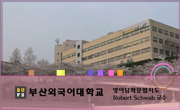이 연구는 우즈벡어와 영어의 지시적 용법의 비교 분석에 초점을 맞추고 있습니다. 주요 목표는 대명사 및 부사 용법 측면에서 우즈베키스탄 시연 bu, shu 및 u의 영어 등가물을 밝히는 것입니...
http://chineseinput.net/에서 pinyin(병음)방식으로 중국어를 변환할 수 있습니다.
변환된 중국어를 복사하여 사용하시면 됩니다.
- 中文 을 입력하시려면 zhongwen을 입력하시고 space를누르시면됩니다.
- 北京 을 입력하시려면 beijing을 입력하시고 space를 누르시면 됩니다.
https://www.riss.kr/link?id=T16362022
- 저자
-
발행사항
춘천 : 강원대학교, 2022
- 학위논문사항
-
발행연도
2022
-
작성언어
영어
- 주제어
-
KDC
744 판사항(6)
-
발행국(도시)
강원특별자치도
-
형태사항
iii, 48 L. : 삽도 ; 30 cm
-
일반주기명
강원대학교 논문은 저작권에 의해 보호받습니다
지도교수: Kim Kyung-Yul
참고문헌 : L. 46-48 -
UCI식별코드
I804:42002-000000032792
- 소장기관
-
0
상세조회 -
0
다운로드
부가정보
국문 초록 (Abstract)
이 연구는 우즈벡어와 영어의 지시적 용법의 비교 분석에 초점을 맞추고 있습니다. 주요 목표는 대명사 및 부사 용법 측면에서 우즈베키스탄 시연 bu, shu 및 u의 영어 등가물을 밝히는 것입니다. 지시어는 직설적 표현이라는 독특한 특징을 가지고 있기 때문에, 그들의 다른 용도는 5개의 범주로 구성되며, 각각은 지시어의 고유한 의미론적 사용과 관련하여 지시어를 분석하고, 그 다음에는 지시어의 비직시적 사용을 다루는 또 다른 하위 클래스가 있습니다. 동일한 텍스트의 우즈벡어 및 영어 버전을 설명하기 위해 문학적 출처에서 추출한 예를 사용하여 다양한 설명을 검토했습니다. 이러한 예는 발화의 지시어를 관찰할 뿐만 아니라 문맥에서 직설적 표현의 역할을 조사하기 위한 목적으로 선택되었습니다. 모든 사례는 실증적 용법에 대한 설명으로 소개되고 문맥에 따른 적용을 설명하는 해설과 두 가지 다른 언어의 예가 이어집니다. 연구에 따르면 두 언어의 설명 체계가 다른 경우가 있습니다. 그러나 실증적 용법 사이에 상당한 유사점이 공간과 시간 측면에서 발견될 수 있으며, 이는 이러한 의미에서 deixis가 보편적인 현상일 수 있다는 가정으로 이어집니다. 그러나 이러한 유사성은 인칭 현시와 비 직시 범주에서 지시사에서 감소하는 경향이 있습니다.
다국어 초록 (Multilingual Abstract)
This study focuses on a comparative analysis of demonstrative uses in Uzbek and English languages. The primary aim is to reveal English equivalents of Uzbek demonstratives bu, shu, and u in terms of pronominal and adnominal uses. As a demonstrative po...
This study focuses on a comparative analysis of demonstrative uses in Uzbek and English languages. The primary aim is to reveal English equivalents of Uzbek demonstratives bu, shu, and u in terms of pronominal and adnominal uses. As a demonstrative possesses the distinctive feature of being a deictic expression, their different uses are organized into five categories, each analyzing a demonstrative in relation to a distinct semantic use of deixis, followed by another subclass that deals with non-deictic uses of demonstratives. The various demonstratives were examined using examples extracted from literary sources to illustrate an Uzbek and English version of the same text. Those examples were chosen with the aim of observing not only demonstratives in utterance but also to examine the role of deictic expressions in context. Every instance is introduced by a description of the demonstrative usage and followed by commentary explaining their application in context and examples from the two different languages. The research indicates that there are instances where the two languages differ in their demonstrative systems. However, considerable similarities between demonstrative uses can be found in terms of space and time, which leads to the assumption that deixis in this sense might be a universal phenomenon. However, these similarities tended to be diminished in demonstratives in the person deixis and in the non-deictic categories.
목차 (Table of Contents)
- Table of Contents
- Abstract i
- Acknowledgements ii
- Table of Contents
- Abstract i
- Acknowledgements ii
- Table of Contents iii
- Chapter 1. Introduction 1
- 1.1 Background to this study 1
- 1.2 The purpose of this study 2
- Chapter 2. Theoretical background 3
- 2.1 The universality of demonstratives 3
- 2.2 The role of demonstratives in deixis 6
- 2.3 Demonstrative uses 10
- 2.4 Demonstrative terms 15
- Chapter 3. Methodology 19
- 3.1 Research design 19
- 3.2 Data collection 20
- 3.3 Research limitations 21
- Chapter 4. Findings and discussions 22
- 4.1 Symbolic spatial deixis 22
- 4.2 Gestural spatial deixis 26
- 4.3 Time deixis. 29
- 4.4 Discourse deixis 33
- 4.5 Person deixis 38
- 4.6. Non- deictic uses 40
- Chapter 5. Conclusion 43
- 5.1 Summary and conclusion 43
- 5.2 Pedagogical implications 44
- 5.3 Suggestions for further research 45
- References 46












